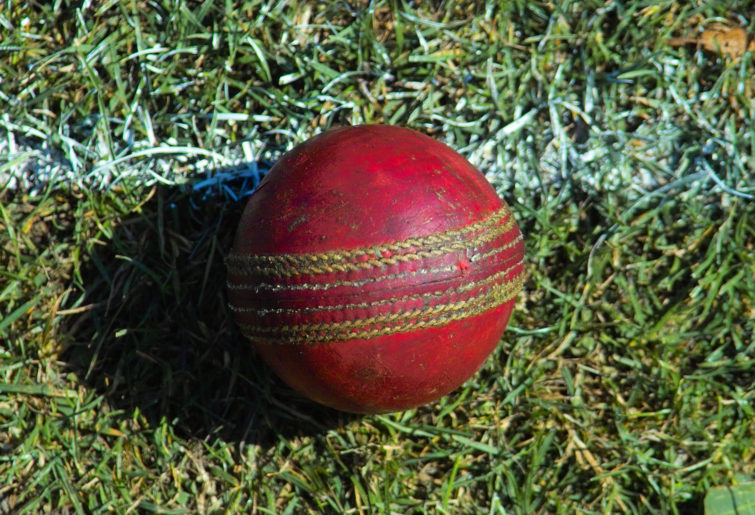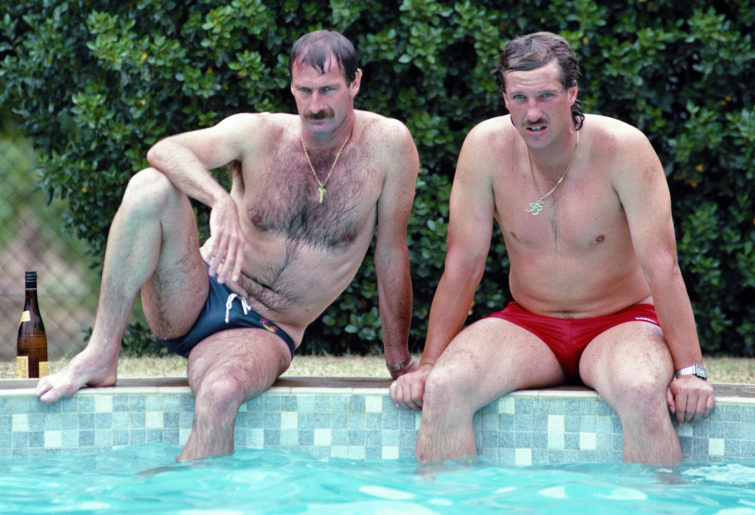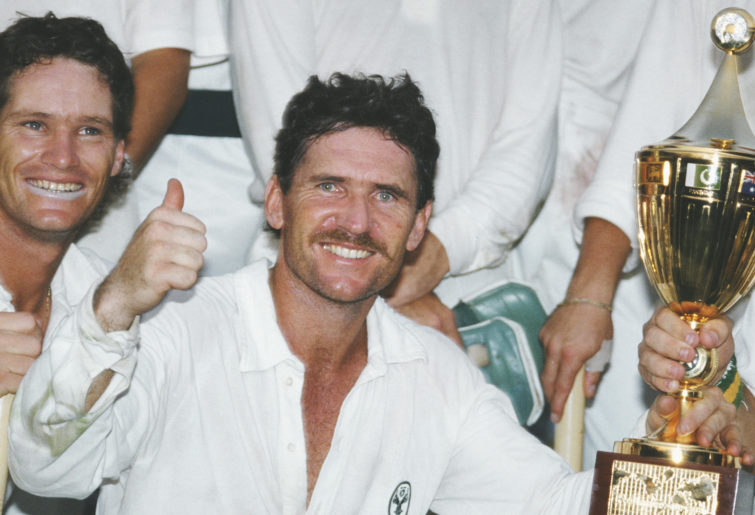For most young Australians of the current generation, 1987 was the year when the Aussie men’s team finally won the Cricket World Cup for the first time.
For many of us at the time, it was a big shock, as in the previous 16 ODIs in the year, the Aussies had only won five. The record seems even more uninspiring if we consider the fact that all but three of those matches were in Australia.
After trying all kinds of different strategies in search of one-day success for more than a decade, the simple strategy worked for the Aussies: bat first whenever possible, the top three have the license to bat long, then some middle-order bats with the duty of using the long handle.
Despite the event being held on the subcontinent, the Australians didn’t rely too heavily on the spinners, instead they picked two wicket-taking fast bowlers. The change of pace used by both Simon O’Donnell and Steve Waugh surprised many teams.
It seems that Australia mainly focused on ODI cricket in the World Cup year, playing just four Tests. They finished the year unbeaten, winning two of the matches. But the final day fight-backs by England at the SCG early in the year and by New Zealand at the MCG in the Boxing Day Test would suggest that the young Aussie team still lacked the killer instinct.

(Wiki Creative Commons, CC BY-SA 3.0)
For many old timers like me, it was the year of the arrival of Peter ‘Who?’ Taylor. Also, it was the year that the Allan Border/Bob Simpson combination started to click, and although it took time and faced much criticism, it eventually helped Australia regain their status as a cricketing superpower.
Since this was a World Cup year, I will start with the ODI matches.
Disaster at WACA
“Poor start of the new year,” laments Bill Lawry in the commentary box as the normally accurate Simon Davis, a limited-over specialist, bowls a juicy full toss out side of the off stump and Chris Broad, on the back of three consecutive Test hundreds, duly puts it into the offside fence.
It was the first day of 1987 and the Aussies were taking on their arch rivals at the WACA. This was the second match of the four-nation Benson and Hedges Perth Challenge, hosted as part of the celebrations of Australia’s defence of the America’s Cup. Such one-day events in different parts of the world were common in the late ’80s and early ’90s and with the popularity of the ODI game approaching its peak, most of these were successes.
Back to the WACA, Broad – making his ODI debut – top-scored with a 74, but it was Ian Botham’s typically aggressive 68 from 39 deliveries that helped England reach 6-273 from 49 overs. The Aussies looked a sorry unit in the field, as at least half a dozen catches went down.
A target of 274 in those days would be equivalent to something like 350 in modern cricket. And Australia were all out for 235 despite a fine Dean Jones hundred (104). Apart from him, there was little to talk about.

(Chris Cole/Allsport)
Perhaps the dismissal of David Boon pretty much summed up the Aussie performance. The Australian vice-captain, badly short of form or confidence, scored one run from his first eight deliveries. Then he got a wide short-pitched delivery from Phillip DeFreitas. While most of the spectators were looking at the square boundary on the offside, Boon had managed to hit it straight to John Emburey in the gully, where he gleefully accepted the catch.
If the Australian performance against England was poor, then their effort against Pakistan the next day was simply pathetic. Batting first, the Aussies reached 6-273. Jones yet again impressed with 121. In reply, opener Qasim Umar smashed 67 from 80 deliveries, but there was nothing from other end.
And when Steve Waugh dismissed Umar, the score was 5-96. Yet, somehow Manzoor Elahi (48), wicketkeeper-batsman Saleem Yousuf (31) and teenaged left-hander Asif Mujtaba (60*) took Pakistan over the line with one ball to spare.
With England and Pakistan assured of the final berth, the January 4 fixture between the hosts and the West Indies became a formality. Still, many Australian fans turned up and they went home dejected after the Windies (8-255) thrashed the Aussies (91) by 164 runs in one of the most one-sided matches in ODI history.
So, the Perth event basically became a fiasco for the home team.
The Tri-Nations Cup
The Benson and Hedges World Series Cup starting later in the month provided a bit more hope, although at the end it seemed like a false dawn. They started the event well, beating England by 11 runs at the Gabba. The man of the match was Dean Jones (101). The English fought back at the SCG when Allan Lamb smashed Bruce Reid in the final over to snatch a three-wicket win. Still the Aussies topped the league stage with five wins from eight matches. It seemed that they had overcome the Windies hoodoo, at least in the ODI matches.
The home side went into the finals as the favourite, but they were undone by their old bogeyman Ian Botham. At the MCG in the first final, Australia never really recovered from losing their opening pair for three runs. A third-wicket stand between Jones (67) and Border (42) gave some stability, but there was no momentum. At the end, 8-171 (44 overs) was never going to be enough, and Botham with 71 from 52 deliveries ensured an early finish.
Australia fancied their chances in the second final after restricting the opposition to 9-187 from 50 overs. But the Australian batting again disappointed against highly efficient bowling and fielding display by the Poms. Botham this time became the bowling hero taking 3-26 from ten overs.

(Adrian Murrell / Getty Images)
So this event emerged as a false dawn for the Aussies. The team was completely unsettled. Only Dean Jones at number three seemed fully aware of his duties. The opening pair was unfixed. While Geoff Marsh played all the 13 ODIs of the summer, he had five different opening partners: David Boon, Glenn Bishop from South Australia, Dirk Wellham, Allan Border and Tim Zoehrer. Many Aussie fans were relieved after the SCG match to see a forgettable home season come to an end.
The Sharjah fiasco
When Allan Border’s team landed at Sharjah in late March for a short four-team event, very few people in Australia were interested in it. Surprisingly, it wasn’t the first time an Australian team had played in Sharjah.
After emerging as an international venue by hosting the first ever Asia Cup in 1984, Sharjah hosted a four-nation event in 1985. The teams were Pakistan, India, Australia and England – the same teams as in the 1987 event.
The format was different, though, back in 1985. And after India booked their place in the finals by beating Pakistan in a low-scoring match, Allan Border’s Aussies took on an experimental England team led by Norman Gifford. The Australians defeated England by two wickets in a nail-biting finish with the match decided on the final ball, but then lost the final to India by three wickets. This was Kim Hughes’ last international match – he was out caught and bowled Mohinder Amarnath for 11.
Back to the 1987 event, it became a fiasco for the Australian team as they ended without any points. After being out-played by Pakistan and India, they had their chances against England. Chasing 231 for victory they reached 2-166 but still managed to lose the match by 11 runs. It seemed that the Aussies had become the experts in snatching defeats from the jaws of victory – three times in just over three months they had done so (against Pakisatan at the WACA, against England at the SCG when Lamb went after Reid, and this one).
But while the Aussies returned home dejected, two things had happened at Sharjah that had a profound effect on their plans for the World Cup. David Boon had endured a miserable home season against Graham Dilley and company, at the end losing his place in both the Test and ODI teams. But here at Sharjah he excelled on the slow pitches with scores of 71, 62 and 73. The first two came in the number three position, the last one as an opener.
After spending months on the fringes of the Aussie team, Mike Veletta finally made his debut at Sharjah. He started with a duck against Pakistan and after scoring five in the next match was dropped. But he was included in the World Cup squad and would become a vital member in the latter half of the event. The WA opener would find his niche in international cricket as a successful slog-over hitter.
The big event
Australia’s World Cup campaign began at Chennai, exactly six months after the end of the Sharjah event. The match against one of the hosts has a special place in my memory because this was the first World Cup match I watched live via the newly established Agortola station. The picture quality wasn’t brilliant but we didn’t mind in those days.
Back to the match, chasing 271 for victory, India slumped from 2-207 to lose the game by one run. Hostile fast bowling by Craig McDermott (4-56) plus two vital run outs helped the Aussie team. In fact, the first thing I noticed about the Australian team was the fitness level of their players and their agility in the field. Fitness of course was absolutely vital in a long tournament with the matches distributed in different corners of a large subcontinent. It seemed that the Simpson effect was already working.
As Australia continued to build on their early success, I watched them carefully and was impressed by a number of things. It seemed that they had used their preparation time well and focused on the weaknesses that had limited their success rate the previous season.
Throughout the World Cup, the Australian team a very settled look about it. In fact, nine out of 11 places almost remained unchanged: the top four, the two all-rounders (Waugh and O’Donnell), the two front-line seamers and the keeper. Tim May emerged as Australia’s main spinner replacing Peter Taylor. Border reckoned that in the slower turning pitches of the subcontinent, May bowling slower and giving more flight would be more effective. Taylor certainly was a better bat, but with the top order contributing so regularly, Australia didn’t really had to bother too much about their lower-order batting.
The second change was more interesting and more important. After Tom Moody failed in his middle-order role, his WA teammate Mike Veletta came in to the team and played some swashbuckling innings, none more so in the final at the Eden Gardens. I am not sure whether the decision to use Veletta as a middle-order bat was taken beforehand or whether it was just a desperate measure. But it worked wonderfully well, and Veletta – previously little known outside his own state – became an unsung hero of the campaign.
Australia produced their best performance in the semi-final at Lahore against the favourites, Imran Khan’s Pakistan. It was a day when everything went according to the plans for Border’s men. Winning the toss and batting first, Australia immediately raced to 1-155 thanks to Marsh, Boon and Jones. In fact, throughout the event, the Australian top three was a model of consistency. Here Boon top-scored with 65. Although, both Boon and Jones fell with the score on 155. Veletta with 48 from 50 deliveries ensured that the momentum was never lost.
In reply, Pakistan lost early wickets, and despite a century stand between the two evergreen veterans Imran Khan and Javed Miandad, the Pakistanis were behind the asking run rate. Wasim Akram, promoted to number six, immediately lofted two massive sixes to lift the run rate. Border wasted no time in bringing his fastest bowler McDermott back in to the attack. He was told to bowl full, fast and straight at Akram. Soon enough he missed one from McDermott and was bowled.
Once Reid bowled an extremely tired-looking Miandad for 70, the contest was effectively over. McDermott cleaned up the tail to finish with 5-44. He was the man of the match.
After Mike Gatting’s men upset the reigning champions India in the second semi-final, it was the oldest cricket-playing nations contesting the final at Eden Gardens. As the match started on a bright autumn morning, some of the Aussie players might have thought that they were playing at the MCG with almost 90,000 people supporting them. Obviously, the England victory over the hosts hadn’t gone very well with the local public and they wanted Border’s men to succeed.
Again batting first, Australia raced to 1-151, with man-of-the-match Boon contributing 75 this time. The memories of his misery in the previous home series were well and truly behind him. The ploy to send McDermott in at number four only worked partially, but again there was nothing stopping the in-form Veletta. His 48 from 31 balls delighted the crowd. His strike rate was 145.16, way ahead of the time.
In reply, a number of top-order England batsmen got going, but none could play the really long innings required as the Aussie bowlers kept picking up vital wickets. O’Donnell and Border produced the big breakthroughs. O’Donnell used his slower delivery to deceive Graham Gooch.
Gooch – who had scored a match-winning ton against India in the semi – was trapped LBW for 35 here. And then Border dismissed his opposite number as Gatting attempted his infamous reverse weep. DeFreitas used the long handle well, scoring 17 from ten balls, but it was too little too late. The Englishmen finished on 8-246, losing by seven runs.
Border’s men returned home as heroes.

(Photo by Allsport/Getty Images)
The Test scenario
Test cricket took a back seat in this year, although statistically it was Australia’s most successful year in Test cricket since 1983. Of course, they played only four Tests in the year.
The fifth Test of the Ashes series at the SCG was a dead rubber, with England thrashing the hosts in the Boxing Day Test. The Sydney Test, of course, is best remembered as the Test of Peter ‘Who?’ Taylor. Still not a regular with the NSW team, Taylor was almost a desperate pick. He took eight wickets in the match as the Aussies won a consolation victory by 55 runs.
Needing 320 for victory, England slumped to 5-102 on the final day and it looked all over. But Gatting mounted a bold counter-attack that for a period left the Aussies in complete disarray. Keeper Jack Richards gave him good company and it was the dismissal of Gatting for 96, caught and bowled Waugh, that eventually settled the issue in favour the home team. Leg-spinner Peter Sleep cleaned up the tail to finish with 5-72.
Allan Border recorded his first series victory as captain by beating the Kiwis 1-0 in a three-Test series at home late in the year. Australia won the first Test by nine wickets. And two of Australia’s World Cup heroes continued with their good work. McDermott took seven wickets and a rejuvenated Boon smashed 143 in the first innings. The Kiwis, of course, came desperately close in the Boxing Day Test. In fact, they thought that they had won the match.
Early on the fifth day, NZ were all out for 286 in their second innings, setting a target of 247 runs. A number of Australian top-order players got out after looking set, and then Sir Richard Hadlee for the umpteenth time in his Test career ran though the Aussie middle order to leave the home side at 9-227.
The second new ball was still new and the last-wicket pair of McDermott and Mike Whitney survived some anxious 25 minutes or so to save the Test match. McDermott survived a huge LBW appeal by Danny Morrison from the final ball of the penultimate over. According to the bowler and others, the ball would have missed both the leg and the off stump but would have crushed into middle.
Then Whitney survived a testing over from Hadlee to ensure the series victory for the hosts.
The summary
After winning the World Cup, Australia remained a major force in ODI cricket. For the Test team, though, more time and work was required. Patience was required with the talents like Dean Jones and Steve Waugh.
At the end, it would require the return of some of the rebel bowlers plus the emergence of a left-handed opener from New South Wales for the Aussie Test team to achieve the required balance.
































































































